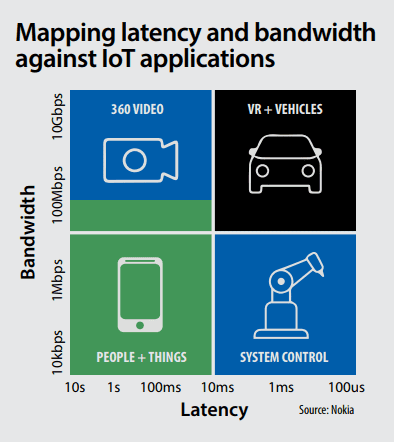The telecoms community and the industrial space must engage more closely if they are to achieve the kind of heightened control and intelligence in factories and warehouses that 5G promises.
This was the thrust of a presentation from Nokia at Hannover Messe 2019, which suggested most high-bandwidth low-latency applications will be more easily served by technology. By contrast, the drive to equip industry with advanced control mechanisms, powered by private 5G networks, to bring order to industrial machines will take closer collaboration between the sectors, along with elements from traditional IT and newer digital markets.
Jane Rygaard, head of marketing for mobile networks at Nokia, took the stage at the 5G Arena in hall 16 at the Hannover event, where certain of the more industrial-minded members of the telecoms industry have set up shop for the week, to promote cross-sector collaboration, and warn against complacency.
Rygaard showed a variant of a slide Nokia has had in its presentations for a number of months, which maps certain industrial applications against their bandwidth and latency requirements (see below). You can draw a 45-degree line from the bottom-left corner to the top-right corner, she explained, and split the applications between those that will be catered for just by the evolution of 5G communications, and those that require more work.

“I am more of less saying that we will get everything top of line just by sitting and waiting – as the silicon gets better, and the technology evolves. Because bandwidth is increasing… But below that line is system control, which takes effort. It cannot be achieved just by waiting for technology to evolve.”
The telecoms industry has to work with industrial enterprises and domain specialists, as well as edge hardware providers hailing from the IT industry, and software and analytics teams from the digital world, to hash out a plan to serve these industrial use cases – which revolve around control, rather than ready advances in latency and bandwidth.
“We need to have conversations about system control – and not just about getting data, but about sending it the other way. A large part of it, when we talk about 5G, is about triangles – about more bandwidth, ultra low latency, massive amounts of ‘things’. But overall, in the end, it is about control,” said Rygaard.
This is the difference with 5G, if the telecoms industry is, indeed, to reinvent itself with this new generation of technology. “2G, 3G, 4G – all of these have been technologies we developed first, to find out later what they would be used for,” she said.
“With 5G, we are getting specifications before the technology is here, and that is a massive step towards resolving that [bottom] corner. [Because] it’s not just about latency – if we are going to cut all the wires, we have to understand [why and how], and do it right.”
Another slide (see below) listed the network requirements of a number of industrial applications. Everything – including motion control, mobile robots, process monitoring – was set to 16x9s reliability. Cycle terms went from less than 2ms for motion control of packaging machines, to up to 100ms for video control of robots.

It showed also requirements for typical bandwidth, device numbers, and cell coverage.
Rygaard presented the industrial alliance Nokia and Qualcomm have convened for Hannover Messe 19, on show across 10 stands in the 5G Arena in hall 16 of the trade grounds, as an example of the kind of collaboration around 5G that is required to ensure the architectural design of new private networks in factories deliver on the promise of industrial change.
In factory settings, the synchronisation of robots on a production line cannot go out of whack, if production is to be properly optimised, she noted. She made a reference to human-machine interfaces and badly dubbed German movies, which she watched growing up in Denmark: the human brain will just flounder if time-sensitive networking is not written in, and clunky dubbing disrupts the lines.
“Control and automation are only as good as the connectivity you build them on,” she said. It goes the other way too, she implied; that the connectivity is only any good if it is designed from scratch to bring total control.
“All of this, from a 5G perspective, really calls for tighter collaboration, otherwise we get to a situation where the expectation does not match the reality. A big part of getting the technology right on the 5G side is with proofs and trials.”
She added: “We need to understand what the technology is to be used for, in a way that is very concrete – and at same time ensure the network does not go in as an afterthought.”

